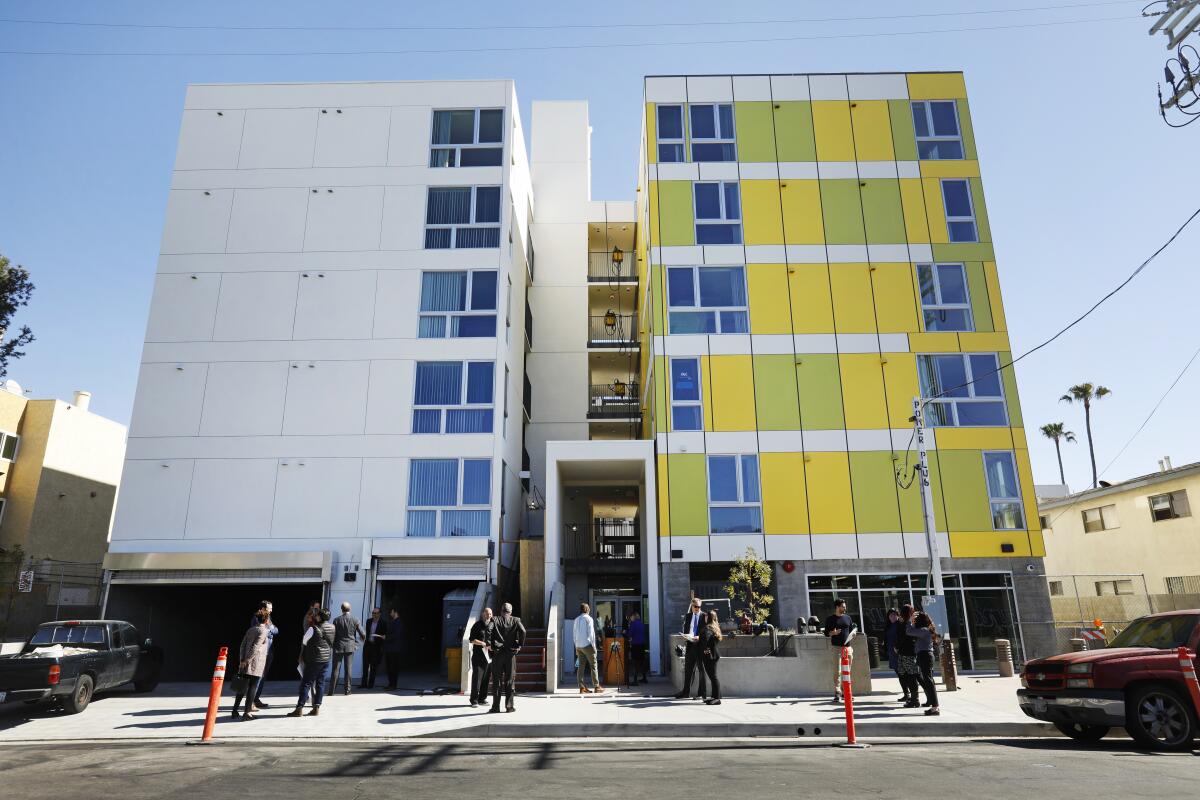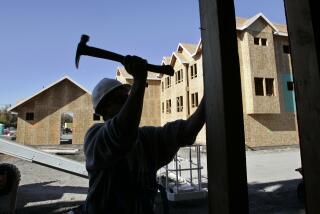Op-Ed: Seize the downturn: Why California should leverage a recession to build affordable housing

For months, U.S. economists have been warning that a recession is looming, and some are saying we may already be in one. But this potential downturn could be put to a positive use — if California gets ready to leverage an economic slump to build the affordable housing the state desperately needs.
In many ways, our current housing crisis stems from the state government’s failure to act on a vulnerable market during the Great Recession of 2008-09 by investing in real estate to create more affordable housing. Instead, corporate investors saw the opportunity and seized it, swooping in to snap up homes and apartment buildings at bargain prices across the state.
Cut to Los Angeles in 2022, where nearly 70% of rental properties are owned by investment vehicles. This shift to corporate ownership has radically altered the rental market by essentially eliminating affordable units, driving up rents — which have increased by nearly 16% just since 2019 — and displacing low-income and working-class people from their homes and communities.
Corporate control of residential property in many working-class communities with large Black and Latino populations expanded significantly in Los Angeles County between 2005 and 2015, according to an analysis by the UCLA Luskin Institute on Inequality and Democracy.
The Great Recession showed us that corporate investors are not going to solve our affordable housing crisis. Building homes for poor people simply isn’t profitable enough as a big business. But we can learn from their tactics. During the next downturn — whenever it officially shows up — California should be prepared to bring strong public investment to the housing sector.
Building homes during a recession would have several advantages. Public dollars would probably go further as private construction projects dry up and the demand for materials, labor and machinery drops — along with prices. The ability to build more cost-effectively should accelerate production of the affordable housing we need to solve our shortage.
To keep pace with demand, the state will need to build about 120,000 more affordable housing units a year by 2030, according to a 2021 report by the California Housing Partnership. Initiating construction on a large scale also provides a host of economic benefits, including creating jobs in fields that include architecture, building trades and manufacturing.
About 60% of Angelenos rent and half of them are rent-burdened, meaning they spend more than 50% of their income on housing. As more affordable housing is built, tenants of the units would be freed up to spend more money on consumer goods and services in their communities. Sky-high rents paid to investors do little to help the local economy, since the money is often destined for corporate landlords who live outside the city and possibly the state or country.
Seizing a downturn to build affordable housing would be far more comprehensive and serve a broader set of constituents than the Great Recession’s home buyer tax credits. California’s program, which ran from 2007-10, aimed to stabilize the housing market by giving first-time buyers up to 5% back on the purchase price of their home, up to $10,000. Although it did create demand for housing, it tended to benefit those who could already afford a down payment and closing costs while doing little to stimulate construction and consumer spending across the state.
Australia has shown that a countercyclical approach to investing in affordable housing can succeed. In 2009 the country established a social housing initiative in response to its recession, allocating billions of dollars to build publicly owned affordable housing and repair existing public housing. By 2012, the government had built about 19,700 units that provided about 9,000 full-time construction jobs and increased the country’s gross domestic product by 0.1%.
Los Angeles could be in a better position to pursue a similar affordable housing strategy if the governor, state legislators and voters each take a specific action.
It looks as though the California Legislature is finally on the verge of doing its part by passing SB 679, a bill that would create the Los Angeles County Affordable Housing Solutions Agency to build new affordable housing. The Assembly approved the bill Wednesday; the Senate passed it last year. Now the bill goes back to the Senate for what is expected to be quick final approval. Then Gov. Gavin Newsom needs to do what he has done for previous bills designed to increase housing supply — and sign this one into law.
The new agency would also work to preserve existing affordable housing, and provide struggling renters with emergency rental assistance and access to legal counsel to help resolve landlord-tenant disputes.
In addition, citizens of Los Angeles should vote for the United to House L.A. measure that is on the November ballot. It would place an added tax on property sales in Los Angeles above $5 million and provide funds to build affordable housing that would serve a mix of low-income and working-class people.
If the state is properly prepared, leveraging economic misfortune for the public good will help solve our housing affordability crisis.
Cynthia Strathmann is executive director of Strategic Actions for a Just Economy.
More to Read
A cure for the common opinion
Get thought-provoking perspectives with our weekly newsletter.
You may occasionally receive promotional content from the Los Angeles Times.










